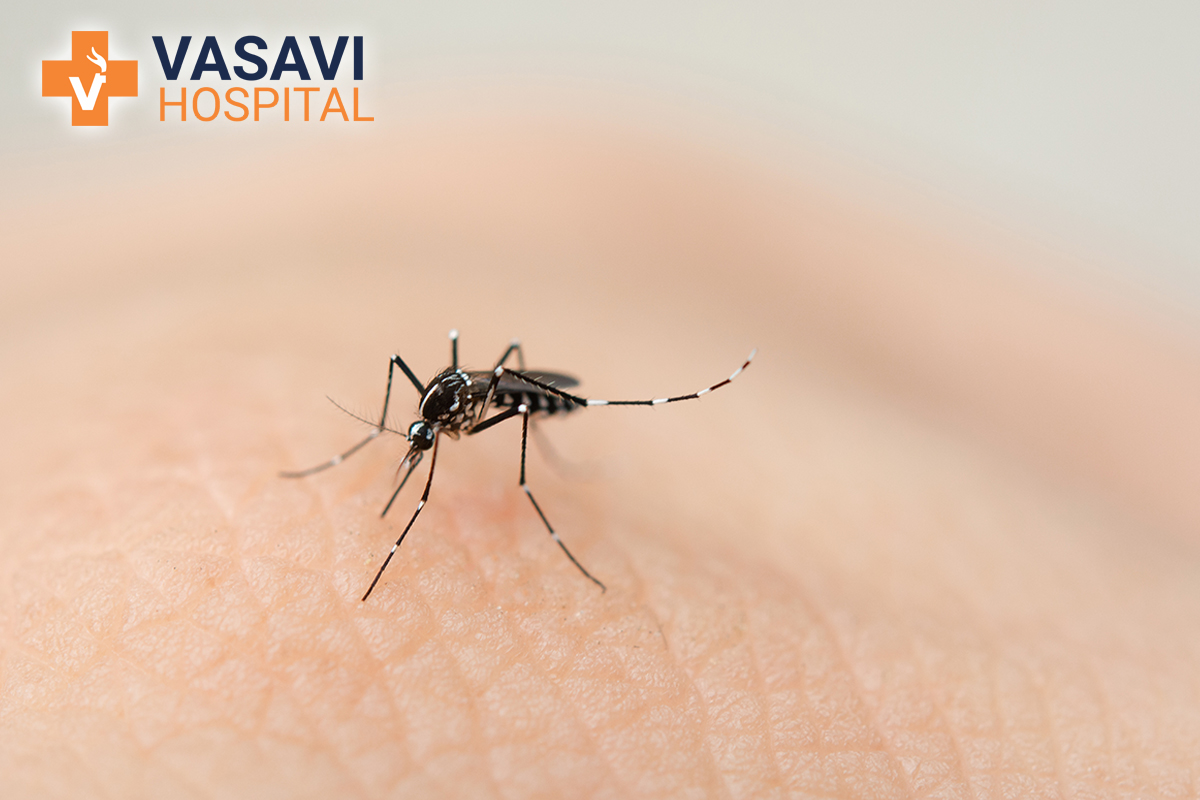
Tropical Fever: Causes, Varieties, and Preventative Measures
Tropical Fever: Causes, Varieties, and Preventative Measures
-
Dengue fever
- Rickettsial fever
- Malaria
- the typhoid virus
- Leptospirosisv
- Influenza
Tropical fevers are exclusive to the tropics and subtropics. Some occur year-round, while others are more prevalent during the wet and dry seasons. Among these were Dengue hemorrhagic fever, rickettsial fever, malaria (often falciparum), typhoid, leptospira bacterial sepsis, and common viral diseases like influenza. Bacteria and viruses are two pathogens responsible for tropical diseases. Because these organisms cause illness, most individuals are familiar with these phrases. Tropical fever is characterised by a quick onset of fever, chills, headache, myalgia, stomach discomfort, conjunctival suppuration, and transitory rash.
In temperate climate zones, many common viral and bacterial infections are transmitted directly from person to person, through the air, or through sexual contact. Also prevalent in the tropics are respiratory infections (such as measles, respiratory syncytial virus, and tuberculosis) and sexually transmitted diseases.
In addition, because clean water and sanitary conditions are typically a luxury in developing nations, many diseases are transmitted through polluted water and food sources. Many of these patients require intensive care unit (ICU) care, such as mechanical breathing, renal replacement therapy, vasopressor support, blood and blood component therapy, etc., due to single or multiple organ failure.
Let's examine the varieties of tropical fever and their effects on health.
Dengue fever
Dengue fever is transmitted by mosquitoes in tropical and subtropical locations worldwide. Mild dengue fever is characterised by a high fever and flu-like symptoms, whereas severe dengue fever, also known as dengue hemorrhagic fever, can cause severe bleeding, a drop in blood pressure (shock), and death.
Rickettsial fever
Rickettsial diseases and associated infections (including anaplasmosis, ehrlichiosis, and Q fever) are caused by a rare form of bacterium that can only thrive inside the cells of another organism. Rickettsiae and rickettsia-like bacteria are often transmitted to humans by ticks, mites, fleas, or lice that have previously dined on an infected animal and disseminate (transmit) disease-causing organisms. Q fever, which is caused by Coxiella burnetii, can be transferred through polluted air, food, and water without the need for a vector.
Malaria
Malaria is a parasite disease transmitted to humans by infected mosquito bites. Malaria is still prevalent in tropical and subtropical regions, despite being uncommon in temperate regions. Malaria typically results in severe disease, including high temperatures and shivering.
Fever of Typhoid
Typhoid fever, which is caused by the Salmonella typhi bacteria, is uncommon in affluent nations but offers a significant health danger in underdeveloped nations, especially among youngsters. The cause of typhoid fever is contaminated food and water or intimate contact with an infected individual. Typical signs and symptoms include high temperature, headache, stomach pain, constipation, and diarrhoea.
Leptospirosis
Leptospirosis is an uncommon bacterial infection transmitted primarily by the urine of dogs, rats, and farm animals. They may not display symptoms, yet they are nevertheless carriers. Leptospirosis is often unpleasant but not life-threatening, comparable to a week-long episode of the flu. However, it can result in much more significant complications, such as chest pain and swelling arms and legs, which frequently require hospitalisation.
Influenza
Influenza (flu) is a highly contagious viral infection that infects the airways of the lungs and causes fever, muscular pains, cough, and other symptoms. It is one of the most severe and prevalent viral winter infections, and it can lead to pneumonia or death.
Preventive Tips
Use mosquito repellents and deterrents.
Wear as much skin-covering protective clothes as possible, such as long sleeves and long pants.v
Avoid entering the breeding ground. Mosquitoes love unclean surroundings, such as stagnant pools, because they provide ideal breeding conditions.
Avoid odours like perspiration and perfume that attract insects.
Keep your surroundings neat and tidy.
When engaging in activities that may involve human contact with ticks, lice, mites, or fleas, such as bushwalking and camping in infected areas, wear long-sleeved protective gear and a wide-brimmed hat.
Use an insect repellent containing DEET or picaridin and examine your skin for bites after these activities (especially behind the ears, on the back of the head, in the groin, armpits, and behind the knees).
Avoid coming into contact with urine-contaminated fresh water or soil. In floodwaters, lakes, rivers, or swamps, it is not advised to wade, swim, or submerge the head. Avoid contact with fresh water, especially after significant rainfall or flooding. If you must wade through floodwaters or other freshwater, use shoes and cover any cuts or wounds with waterproof bandages or dressings.
To make the water drinkable, boil it or apply a suitable chemical treatment.



0 comments